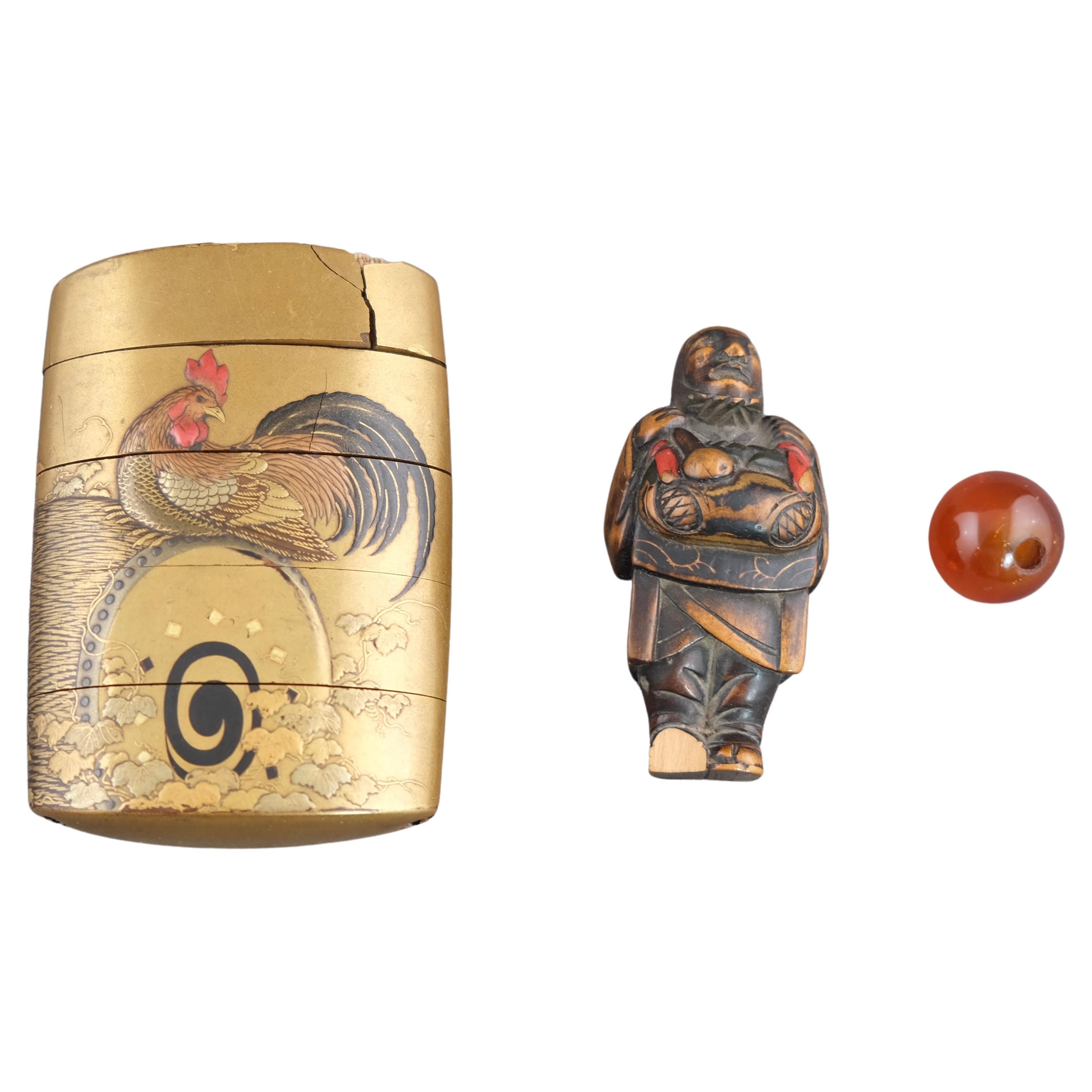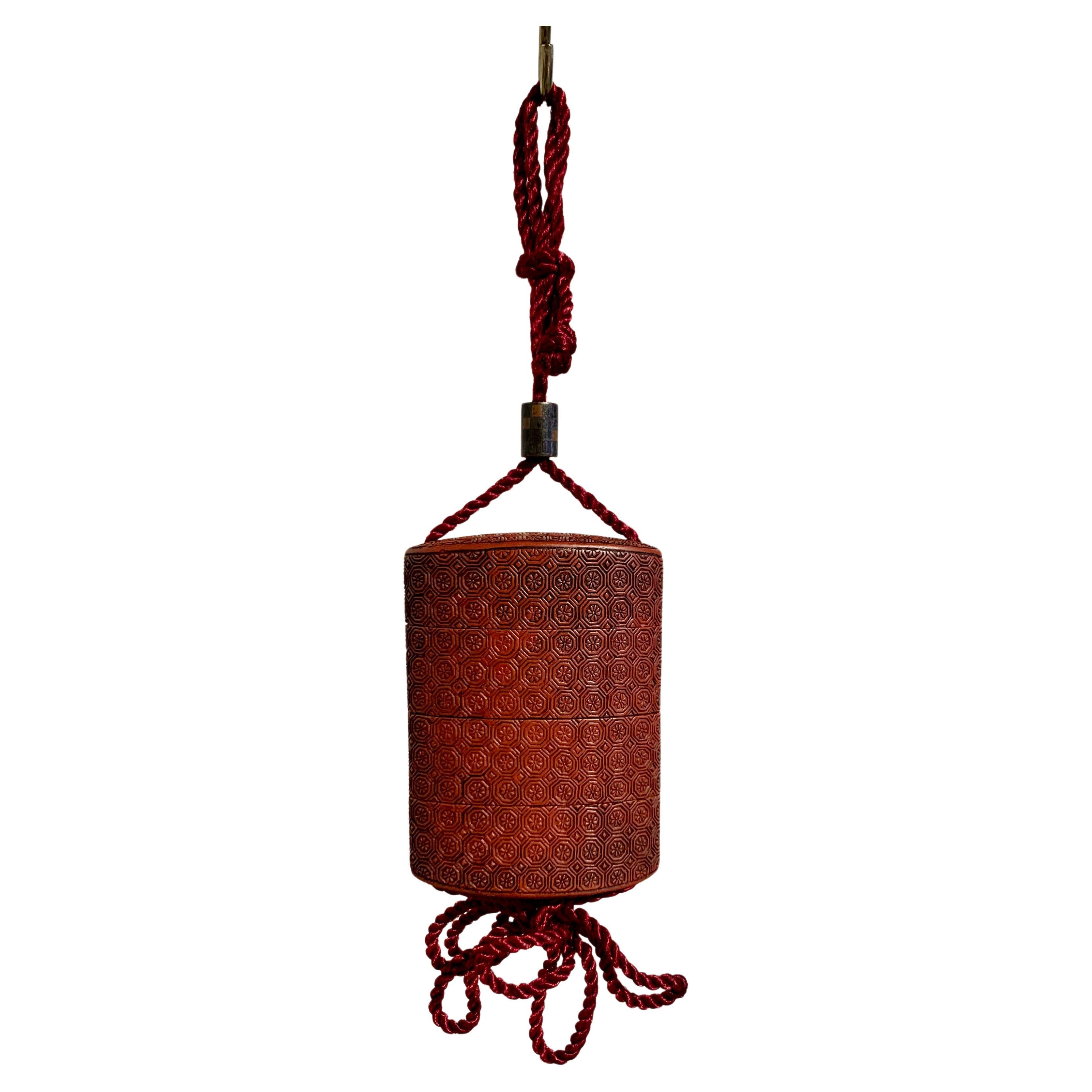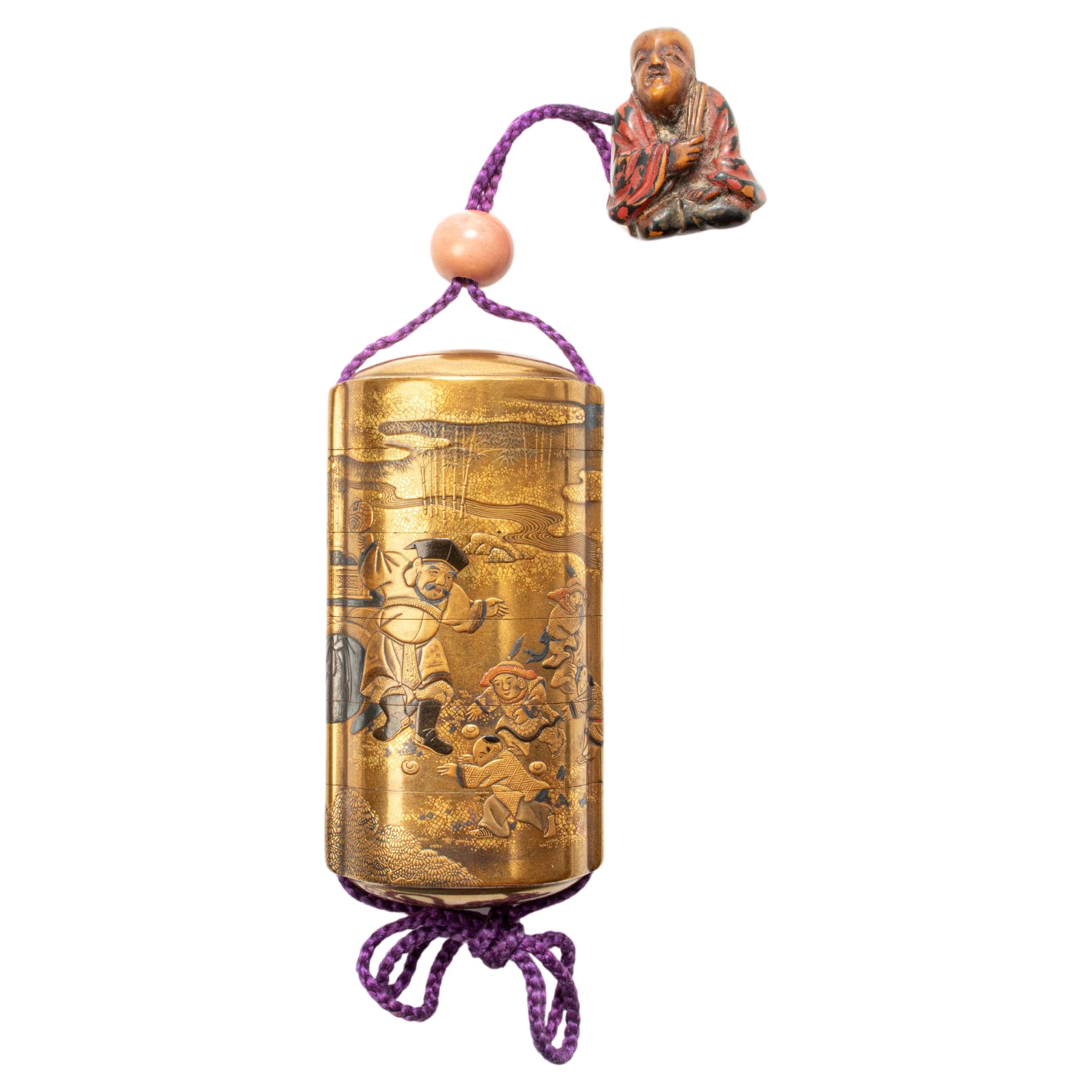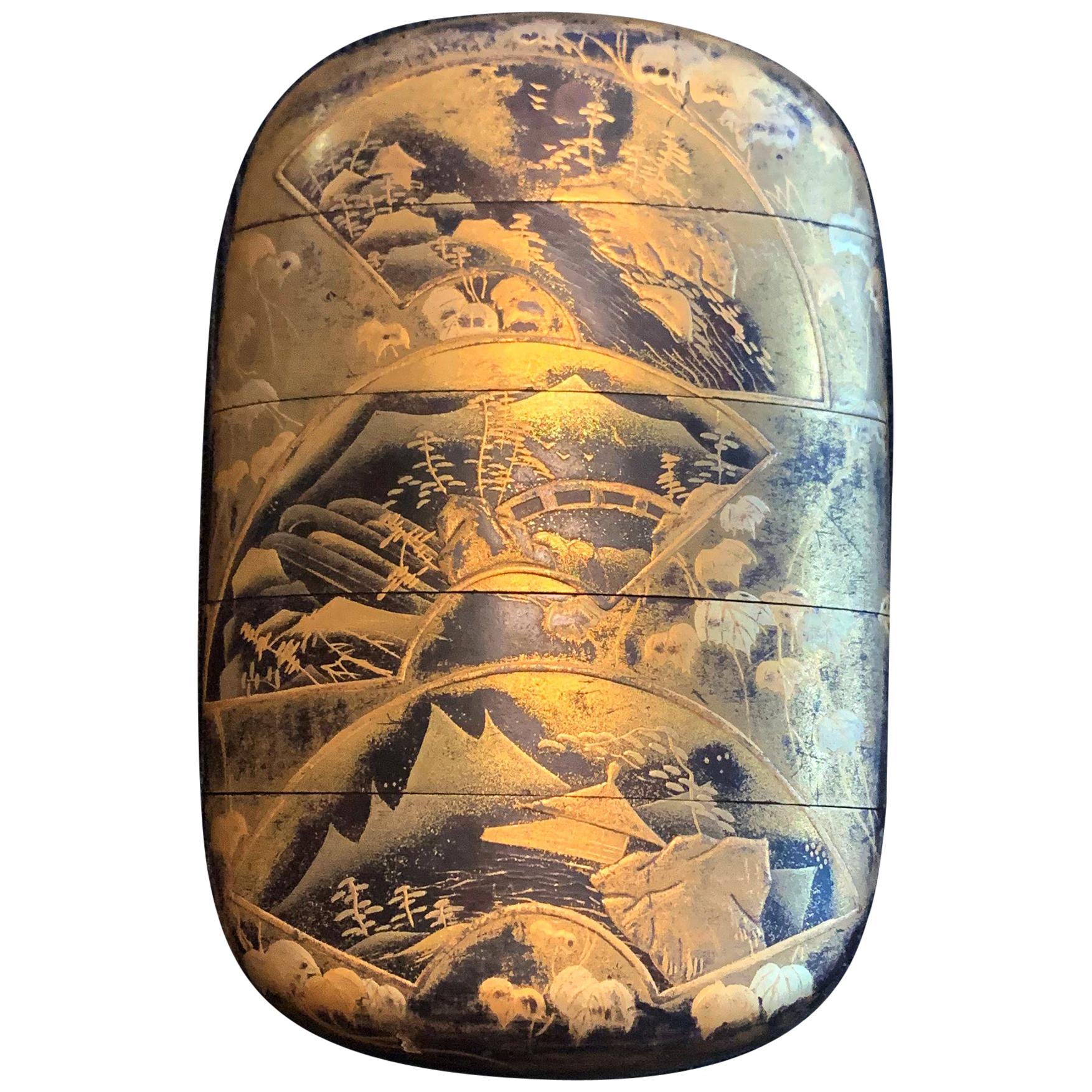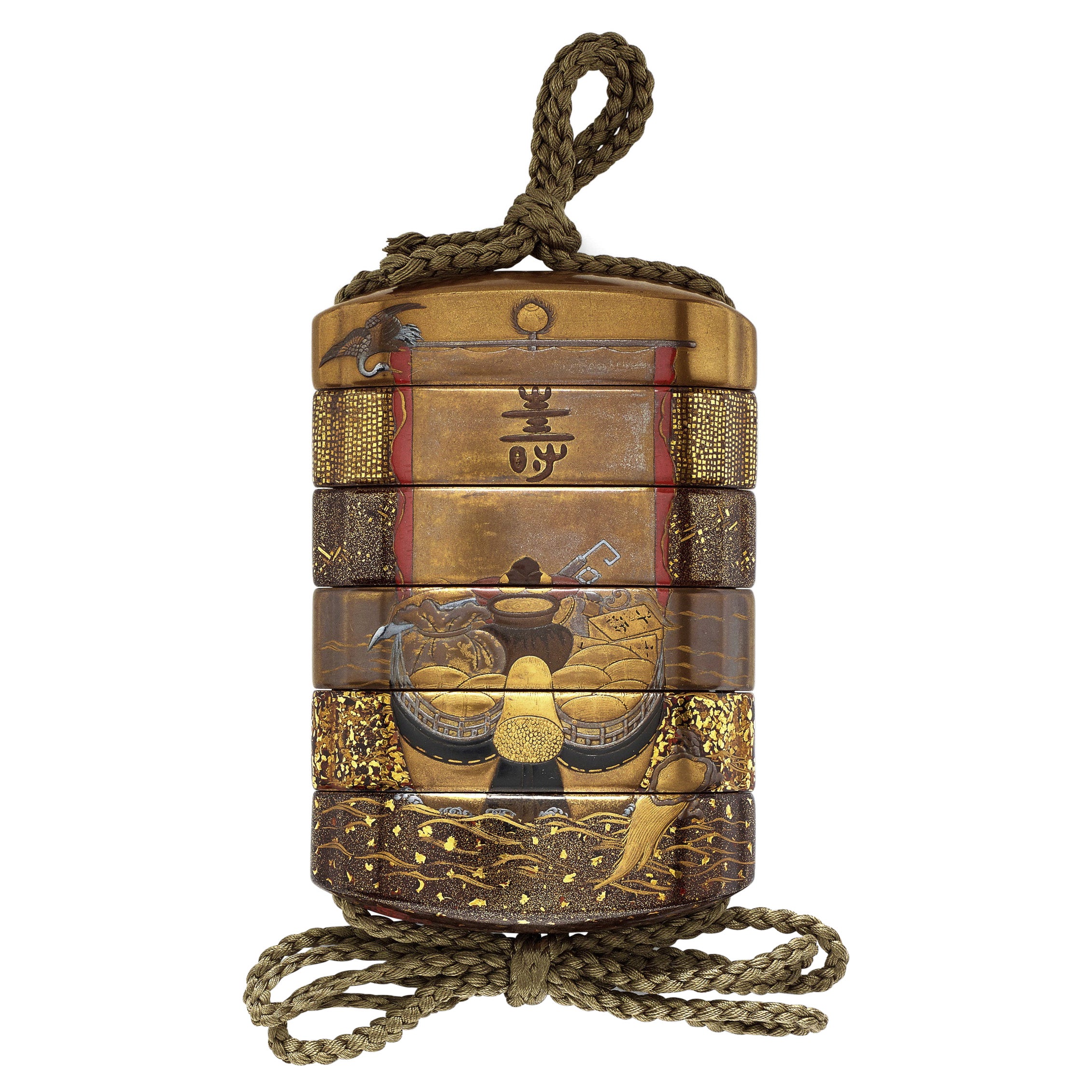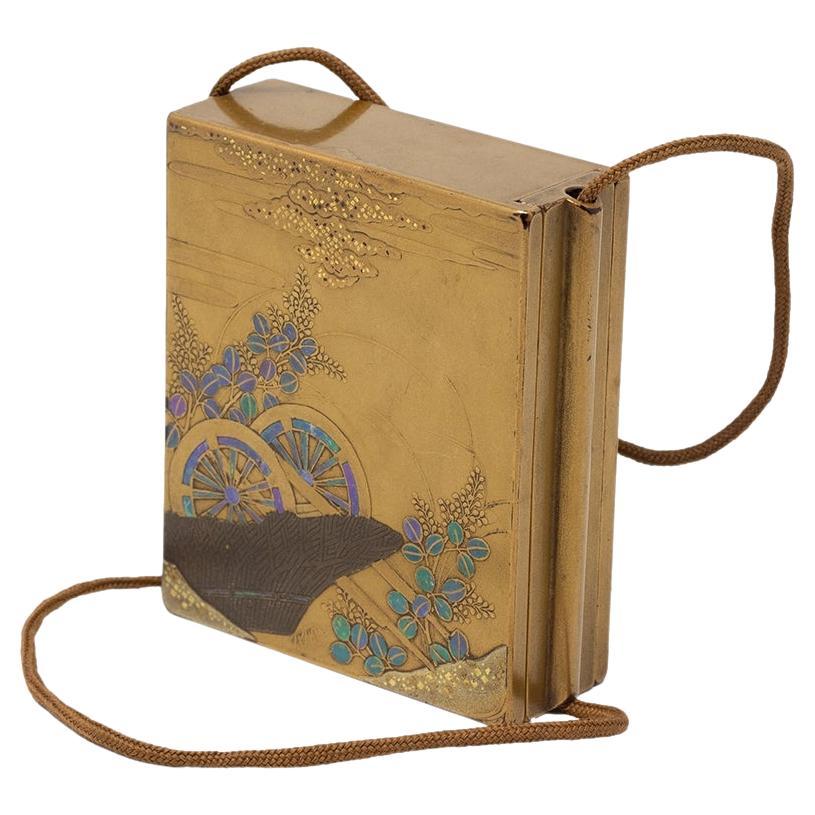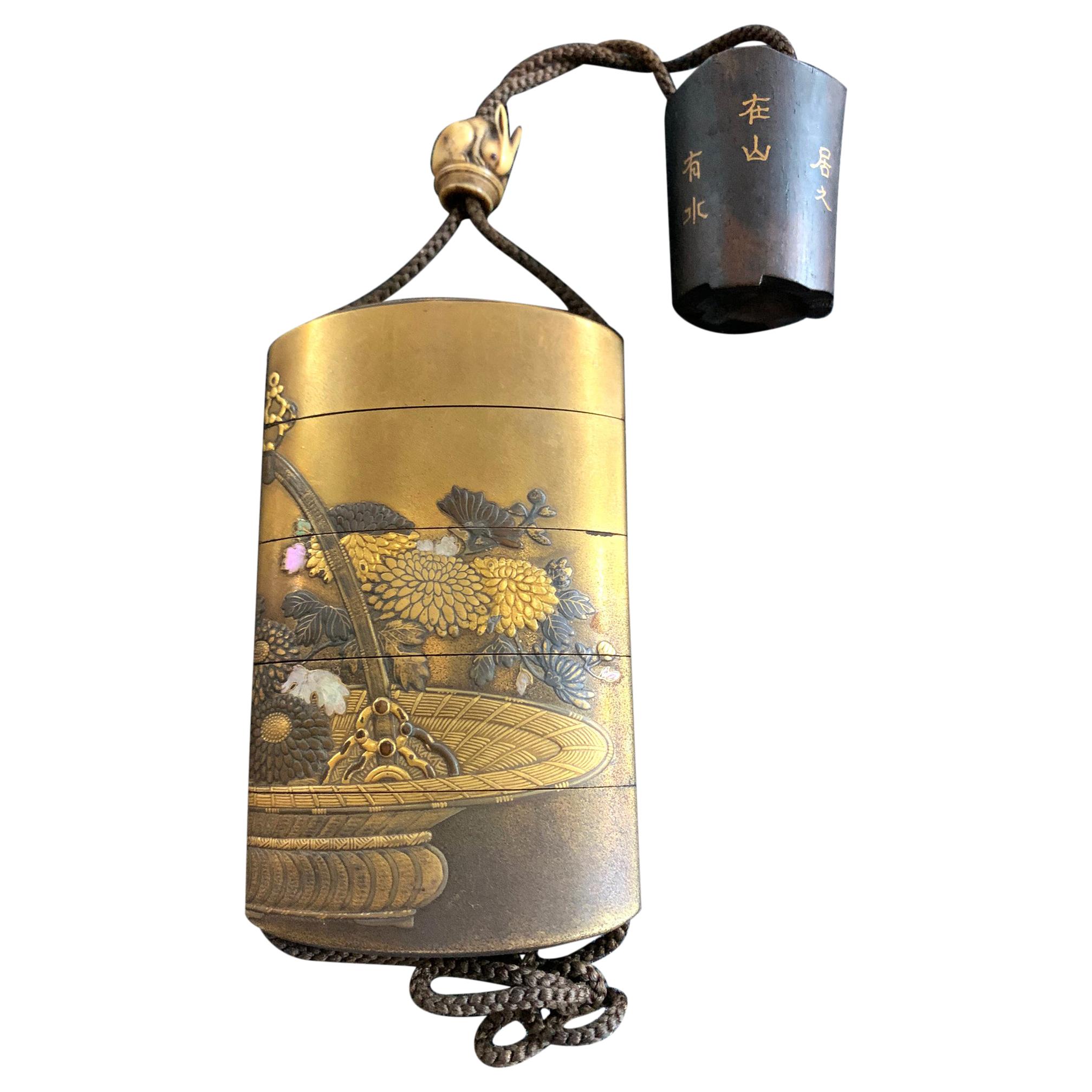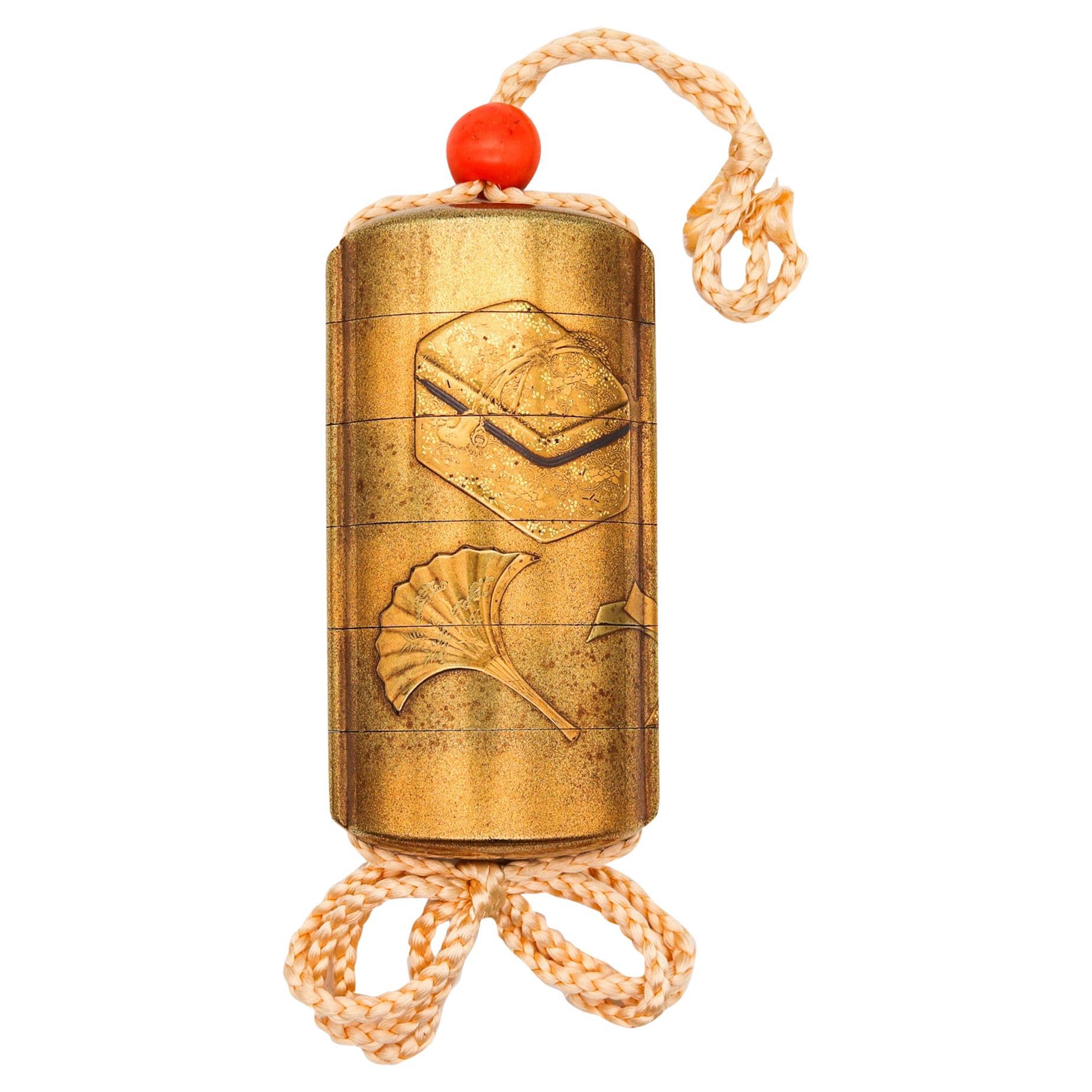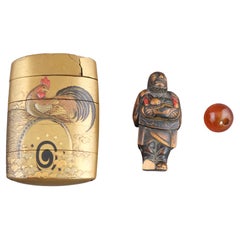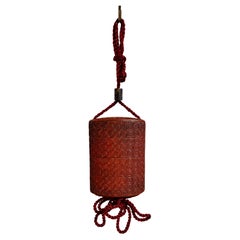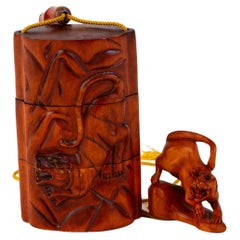
Signed Japanese Carved Boxwood Tiger Inro Ojime with Netsuke
View Similar Items
1 of 8
Signed Japanese Carved Boxwood Tiger Inro Ojime with Netsuke
About the Item
- Dimensions:Height: 2.17 in (5.5 cm)Width: 0.99 in (2.5 cm)Depth: 3.55 in (9 cm)
- Materials and Techniques:Boxwood,Hand-Carved
- Period:
- Date of Manufacture:20th century
- Condition:Wear consistent with age and use.
- Seller Location:Nottingham, GB
- Reference Number:1stDibs: LU9003235458762
You May Also Like
- Japanese Inro with Netsuke, Late 19th CLocated in Stockholm, SEA high quality lacquer inro with a carved wooden netsuke. Both are unfortunately damaged but still very nice art pieces. The way the rooster is executed is just exquisite.Category
Antique Late 19th Century Japanese Lacquer
MaterialsBoxwood, Lacquer
$272 Sale Price20% Off - A Japanese maki-è lacquer inroLocated in Milano, ITJapanese inro with two compartments, in maki-è lacquer with nashiji decorations and circular reserves depicting flowers and leaves. Coral colored ojime and lacquer manju netsuke. Si...Category
Antique Mid-19th Century Japanese Japonisme Lacquer
MaterialsLacquer
- Japanese Carved Cinnabar Lacquer Inro, Meiji Period, late 19th c, JapanLocated in Austin, TXA good Japanese carved cinnabar three case inro with mixed metal ojime, Meiji period, late 19th century, Japan. The three case inro of standard form, comprised of three container se...Category
Antique Late 19th Century Japanese Meiji Lacquer
MaterialsSilver, Copper
- Fine Japanese Lacquered Inro with Inlays by KajikawaLocated in Atlanta, GAA Japanese four-case lacquer inro by a member of Kajikawa family circa 19th century (late Edo to early Meiji period). It depicts a nocturnal scenery of a meandering stream surrounded by bush clovers, where a full moon is reflected on the water. It was masterfully decorated in gold and silver maki-e using a combination of techniques including takamakie, togidashi and kirigane as well as aogai (abalone shell) inlays. The stream was set between the slightly elevated banks, adding to this piece a already strong three-dimensional composition. The interior was decorated in gold nashiji. It was signed on the bottom "Kajikawa Zou" (made by Kajikawa and a pot seal centered with "Ei" in Kanji. In one of the compartment, there is a katakana mark, appears to be a name, possibly the owner. Kajikawa clan was one of the most famous lacquer artisanal family established in the 17th century. Many well known members over the generations produced lacquer art in a wide range of formats, but two third were signed only with the family name such as this one. It is therefore not possible to pinpoint the exact author of this piece. Provenance: This inro was purchased as lot 349 in Christie's New York sale Japanese...Category
Antique 19th Century Japanese Japonisme Lacquer
MaterialsShell, Wood, Lacquer
- A Japanese Lacquer Inro Depicting A Daikokuten With His HammerLocated in Milano, ITJapanese lacquer inro depicting a Daikokuten with his hammer watching children, next to a Matsu plant. Excellent quality decoration with relief details, shine and original patina. ...Category
Antique Mid-18th Century Japanese Japonisme Lacquer
MaterialsLacquer
- Fine Japanese Lacquered Inro by YutokusaiLocated in Atlanta, GAA four-case lacquered Japanese inro by Yutokusai (Gyokkei), a lacquer artist active from 1845-1900 (end of Edo to Meiji period). The slightly round inro features a very intricate design with three unfolded fans on the front and two on the back: each reveals a vignette landscape scenery, likely real places in Japan. Using a combination of hiramaki-e and slight takamaki-e, the artist deftly created the pictures with fine details, rendering the inro as a miniature artwork...Category
Antique 19th Century Japanese Japonisme Lacquer
MaterialsWood, Lacquer
Recently Viewed
View AllMore Ways To Browse
Wood Mother Of Pearl Japan
Japanese Antique Sake Set
Burmese Container
Lacquered Bento Box
Japanese Arrowheads
Japanese Lacquer Comb
Antique Japanese Bento Box
Antique Japanese Wedding Box
Japanese Antique Bento
Laque Japon
Chinese Chippendale Jewelry Box
Chinese Lac Burgaute
Japanese Bone Inro
Japanese Lacquer Inro Bag
Kamakura Bori
Nara Chest
Pagan Bya
Temple Ranma Panel
